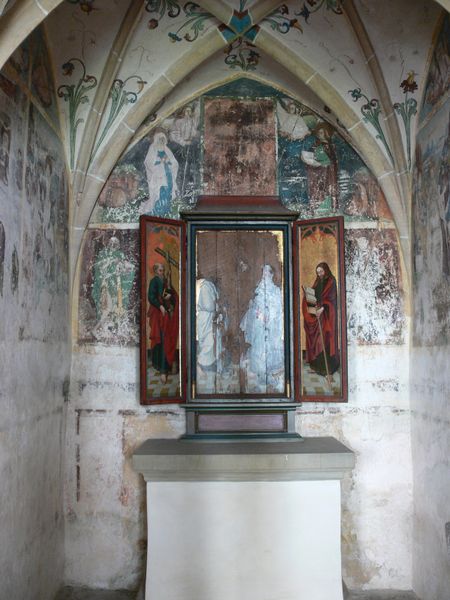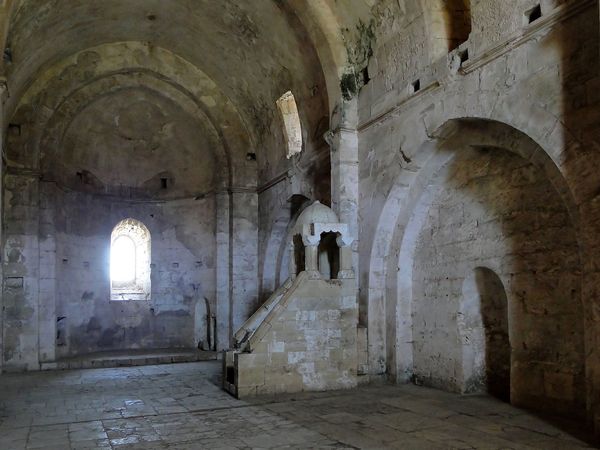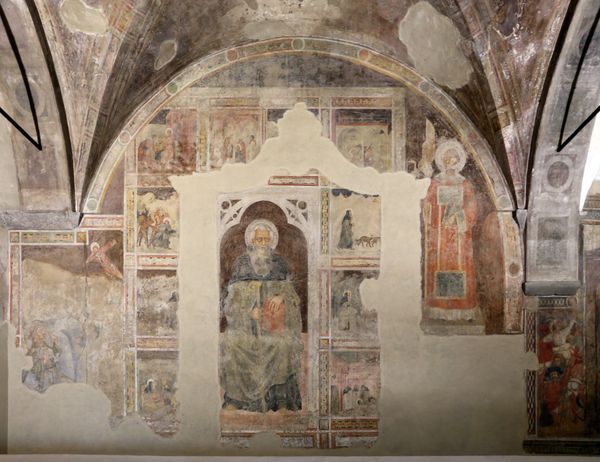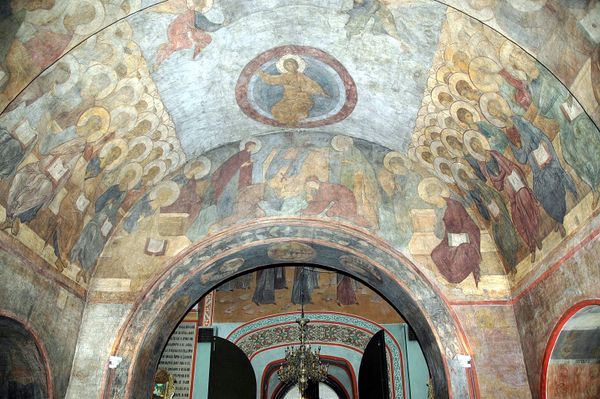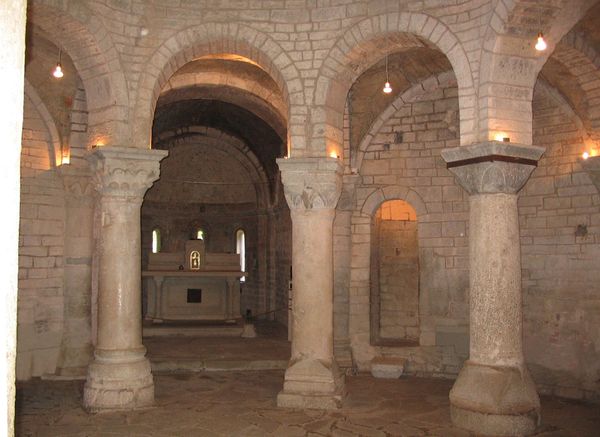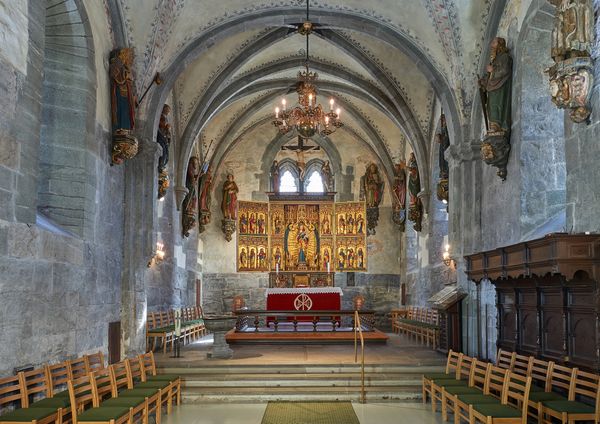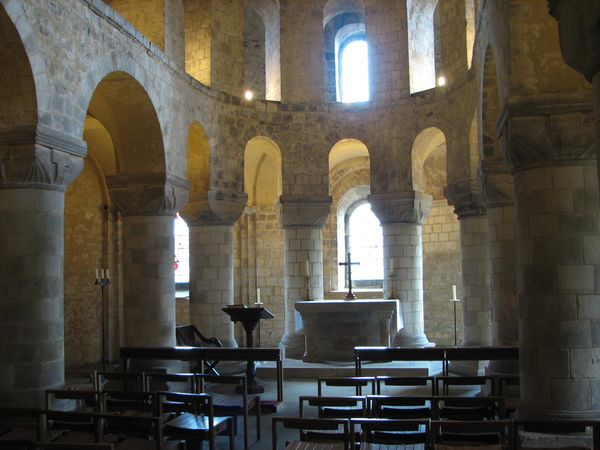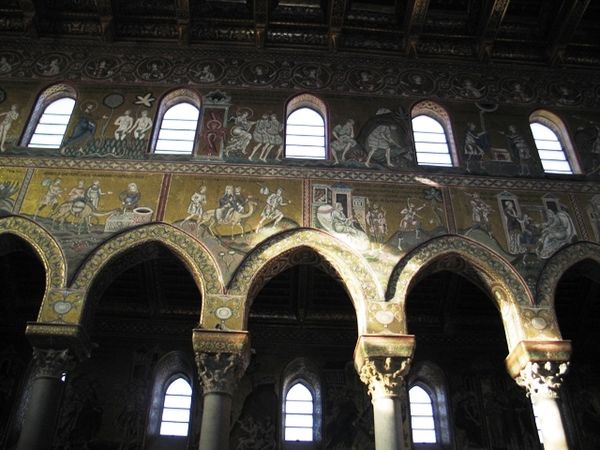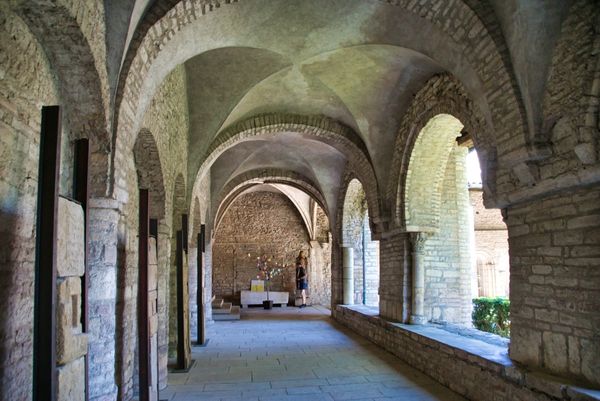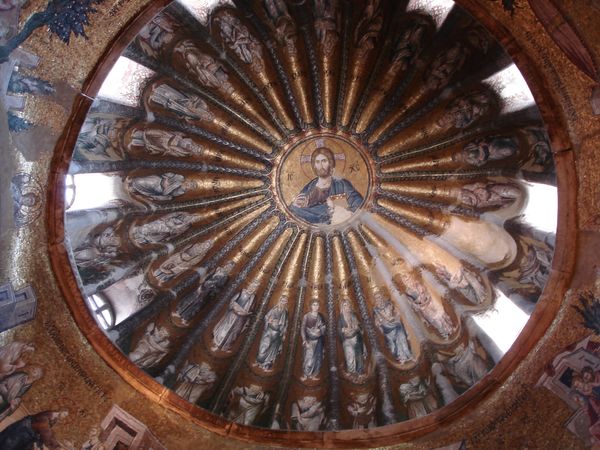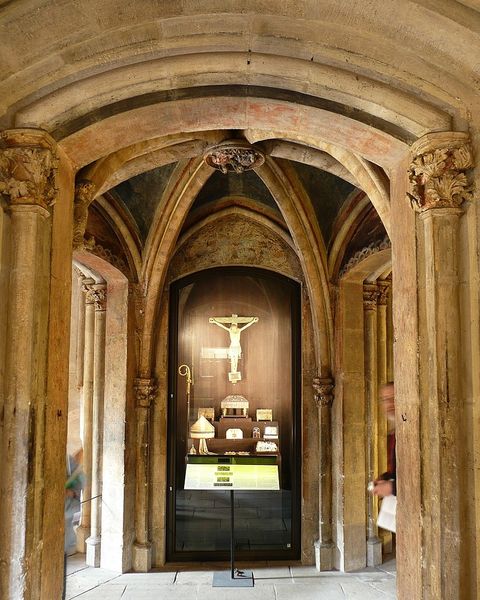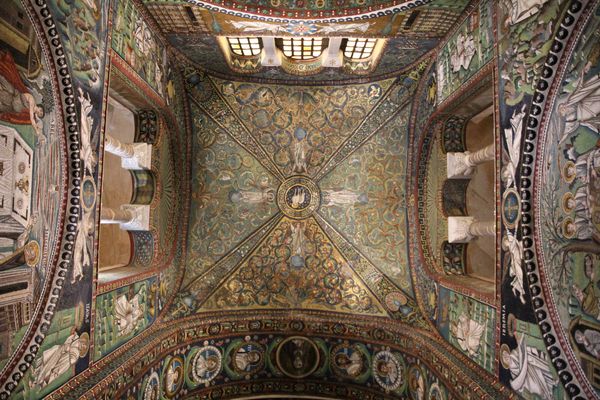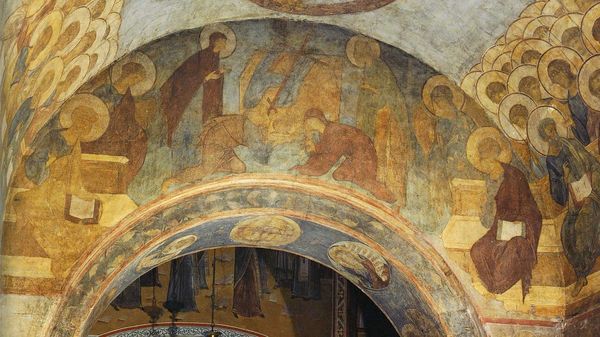
carving, painting, fresco, architecture
#
carving
#
painting
#
sculpture
#
holy-places
#
historic architecture
#
fresco
#
traditional architecture
#
arch
#
history-painting
#
architecture
#
building
Copyright: Public domain
The Interior of Yttergran Church in Sweden, made by Romanesque architects between approximately 1000 and 1250, encapsulates the cultural and spiritual environment of its time. Within these walls, gender, class, and social status were perpetually performed. Religious spaces like this one served as a backdrop for life events that reinforced hierarchies in medieval society. The placement of figures in wall paintings and the distribution of seating within the church often reflected the existing social order, subtly affirming gender roles and class distinctions. The Romanesque style, evident in the rounded arches and robust forms, aimed to evoke a sense of divine order and inspire reverence. The use of light and shadow, combined with the colorful frescos, creates a space where one can feel both the weight of tradition and the promise of spiritual transcendence. Consider how the physical space of the church was experienced by different members of the community and reflect on how these architectural choices shaped their understanding of their place in the world.
Comments
No comments
Be the first to comment and join the conversation on the ultimate creative platform.
